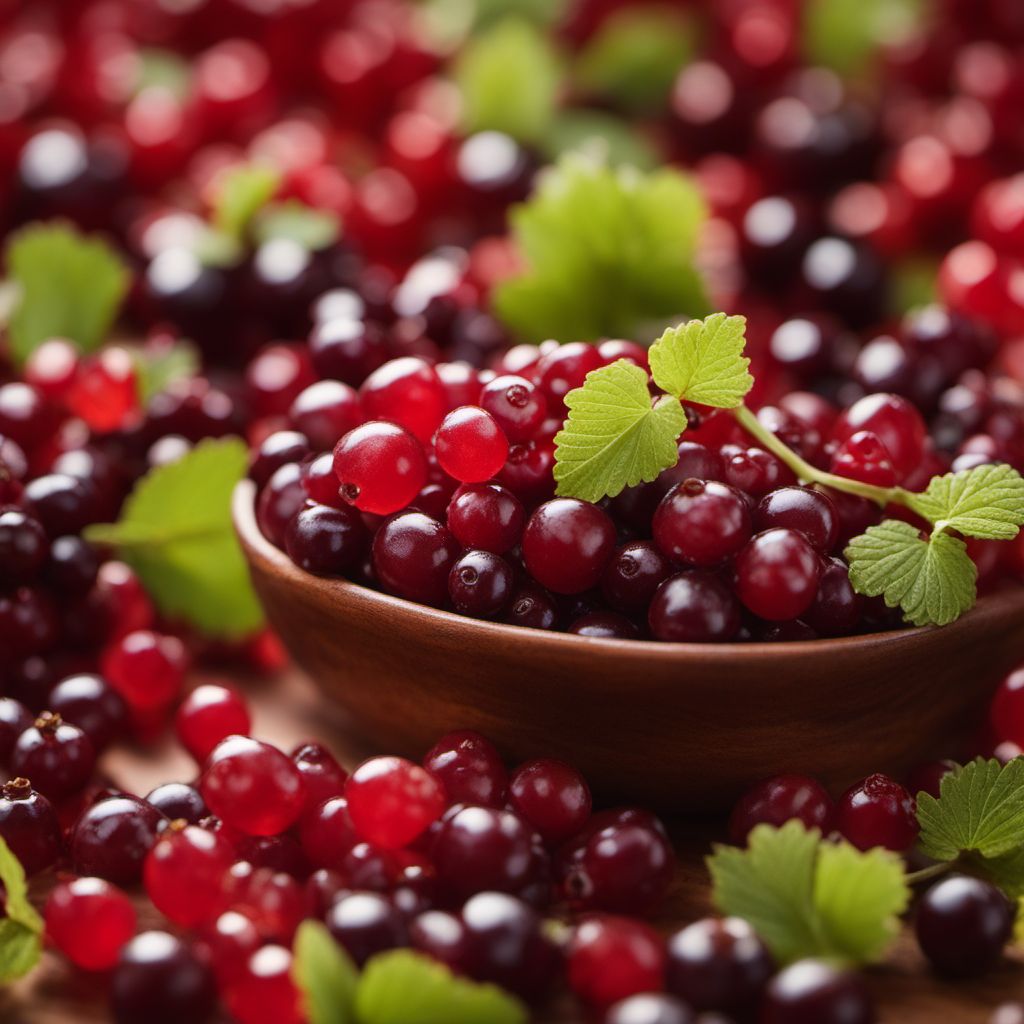
Ingredient
Currants and similar-
Tiny Tangy Gems
Currants and similar are small, round berries that come in various colors, including red, black, and white. They have a tart and slightly sweet taste, with a firm and juicy texture. These tiny tangy gems are commonly used in baked goods, jams, sauces, and salads.
Origins and history
Currants have a long history dating back to ancient Greece and Rome, where they were highly valued for their medicinal properties. They were later introduced to Europe and became popular in various cuisines. Today, currants are cultivated in many countries around the world, including the United States, Greece, and Iran.
Nutritional information
Currants and similar are low in calories and fat, but rich in antioxidants, vitamins, and minerals. They are particularly high in vitamin C and fiber, which support immune health and digestion. Additionally, they provide small amounts of iron and potassium.
Allergens
Currants and similar may cause allergic reactions in individuals with sensitivities to berries or other fruits. It is advisable to exercise caution and consult a healthcare professional if you have any known allergies.
How to select
When selecting currants and similar fruits, look for plump and firm berries with vibrant colors. Avoid any that appear shriveled or discolored. If purchasing dried currants, ensure they are free from moisture and clumps.
Storage recommendations
To maintain the freshness of currants and similar fruits, store them in a sealed container or plastic bag in the refrigerator. They can last for up to two weeks. Dried currants should be stored in a cool, dry place away from direct sunlight.
How to produce
Currants and similar fruits can be grown in home gardens or containers. They thrive in well-drained soil and require regular watering. Pruning can help maintain their shape and promote healthy growth.
Preparation tips
Currants and similar fruits can be used in a variety of ways. They are commonly used in baked goods such as cakes, muffins, and scones. They also make delicious additions to jams, jellies, sauces, and chutneys. In savory dishes, currants can be used in salads, stuffings, and meat dishes for a touch of sweetness and acidity.
Culinary uses
Currants and similar fruits are widely used in European cuisines, particularly in British, French, and Greek dishes. They are also popular in Middle Eastern and Persian cuisines. In terms of availability, they can be found in grocery stores, specialty food markets, and online retailers.
